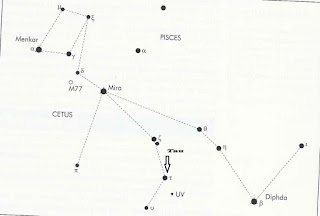Thomas Cooke
March 8th 1807- October 19th 1868, Telescope Maker of
York
Thomas Cooke
was born in the village of Allerthorpe in the East Riding of Yorkshire on 8th
March 1807.Although born into a very poor family he would go on to become one
of the greatest telescope makers of all time. (He had no connection with Thomas
Cook, the holiday company). His father
was a shoe maker, and it was assumed that he would join the family business.
However Cooke had other ideas, he wanted to follow his hero Captain James Cook
(no relation) in exploring the world. When ready
to join a ship at Hull he was persuaded at the last minute by his mother to
stay in England. To earn money he opened a village school and taught
mathematics to the sons and daughters of wealthy landowners.
He moved to
York in 1829 still teaching, it was then that he made his first telescope,
using the base of a whiskey tumbler for a lens and some tin to make the
tube.
In 1837
Thomas Cooke opened his first shop at No. 50 Stonegate in York with a loan of
£100 from his wife’s uncle. Cooke had married Hannah Milner while teaching; she
had been one of his pupils.
The
instrument making business was an instant success. Cooke quickly gaining a
reputation for high quality. Within a short period of time he was making not
only telescopes but also, Microscopes, Opera Glasses, Spectacles, Electrical
Machines, Barometers, Thermometers, Globes, Sundials, Mathematical Instruments,
etc.!!
By 1844
business was so good that he had to move to new premises at No 12 Coney Street,
York, here the orders for telescopes kept coming in as did a new venture for
Cooke, making Turret clocks. These
behemoths are about the size of a medium family car and weigh about ¾ of a
ton. They can still be found in church
and factory clock towers.
In 1855 he
exhibited instruments at the Universal Exhibition in Paris and visitors were
much impressed. Again the orders increases and yet bigger workshops were
needed.
In 1856 The
Buckingham Works was built on the site of the home of the second duke of
Buckingham at Bishophill in York. It was one of Britain’s first purpose built
telescope factories. Many of Cooke’s finest instruments would be made here; the factory would be used by Cookes until the 1940s.
An order for
a telescope was received from Prince Albert in 1860, and a magnificent
instrument was built, in recognition for this work and under order from H M
commissioners Cookes` at the 1862 exhibition in London were given a very
prominent position for their display, and they received an embarrassingly large
amount of orders.
Also at the
great exhibition in 1862 was Robert Newall from Gateshead, a millionaire who
had made his fortune making wire. He was also interested in astronomy.
He purchased
two lenses 25 inches (63.5 cm) across and asked Cooke if he could make him a
telescope. He said he could and that it would take a year. Unfortunately Cooke
was making a rare mistake. It took not one but six years to complete, it was
actually completed a year after his death. When finished the telescope tube was
32 feet (960cm) long and the whole instrument weighed 9 tons. It was the
biggest telescope in the world and it had been made in York.
Around 1866
Thomas Cooke started to produce steam cars, at least four and possibly six were
produced. He used three wheels rather than four because he found it was easier
to devise a steering system for just a single wheel.
The steam cars travelled at 15 mph;
unfortunately they were banned from the roads because they travelled too
quickly. In those days a man with a red flag had to walk in front of any
vehicle that was not pulled by a horse. The speed of a walking man is only
about 4 mph. It would therefore be very dangerous to walk in front of this
Steam Car.
In
frustration he took the steam engine and placed it into a boat in which he
travelled up and down the River Ouse. He wryly commented that no one with a red
flag would bother him there.
Thomas Cooke
worked incredibly hard during his life, one problem he had was he spent too
much time working; sadly he literally wore himself out.
Thomas Cooke
died on the 19th October 1868.
After the
death of Thomas Cooke, the company was run for the next 25 years by his two
sons Thomas Cooke Jnr who was an optician and Charles Frederick Cooke who was
an engineer.
In 1893 H D
Taylor who was Optical Manager at the Buckingham Works designed the Cooke
Photographic Lens; it would become the basic design for nearly all future
camera lenses.
The last
major astronomical project, a large transit instrument for the Greenwich
Observatory began in 1932, it proved to be a disaster for Cooke’s. The company
was hit hard by the great depression in the early 1930s and many of their
skilled workers were laid off.
In 1938
Cookes sold the astronomical side of the business to Grubb Parsons of
Newcastle. A new factory the Haxby Road site was built in 1939. In 1948 the Buckingham
Works was sold to the Northeastern Electricity Board.
On the 1st
January 1963 a new company Vickers Instruments was formed and replaced Cooke
Troughton and Simms as a trading company.
















































